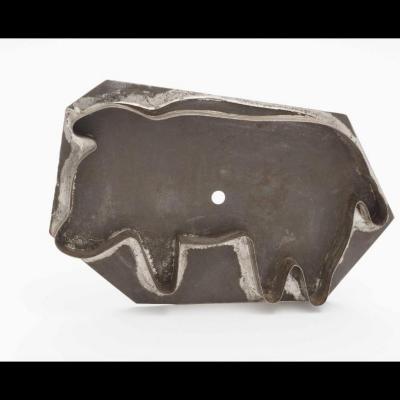Pig Cookie Cutter
Type: Food preparationMaterial
tiniron
Dimensions
Overall: 4 1/2 x 2 3/4 x 1/2in. (11.4 x 7 x 1.3cm)Creation Date
circa 1800 – 1900Description
Tinned sheet iron cookie cutter, composed of a polygonal plate soldered to a strip shaped like the outline of a pig, facing to the left. One small punched hole within the outline allows for air to escape during use.Few terms in the English language have the power to generate instantaneous good feelings as the word "cookie." These delicious treats have been enjoyed by cultures across the planet for countless centuries, and were as popular with early Americans as they are today. True, a lumpy or round cookie tastes the same as one shaped by a cutter, but the myriad of surviving antique cookie cutters tells us that shaped ones were better.
The availability of inexpensive "tin" during the late 18th and early 19th centuries allowed for a sort of renaissance in the American kitchen. Tinsmiths operating in all areas could easily produce cookie cutters, often from scrap material, limited only by their imaginations. Cutters were made in the shapes of animals, people and symbols. Some made religious themed cookies, while others were tailored specifically for girls or boys of any age.

